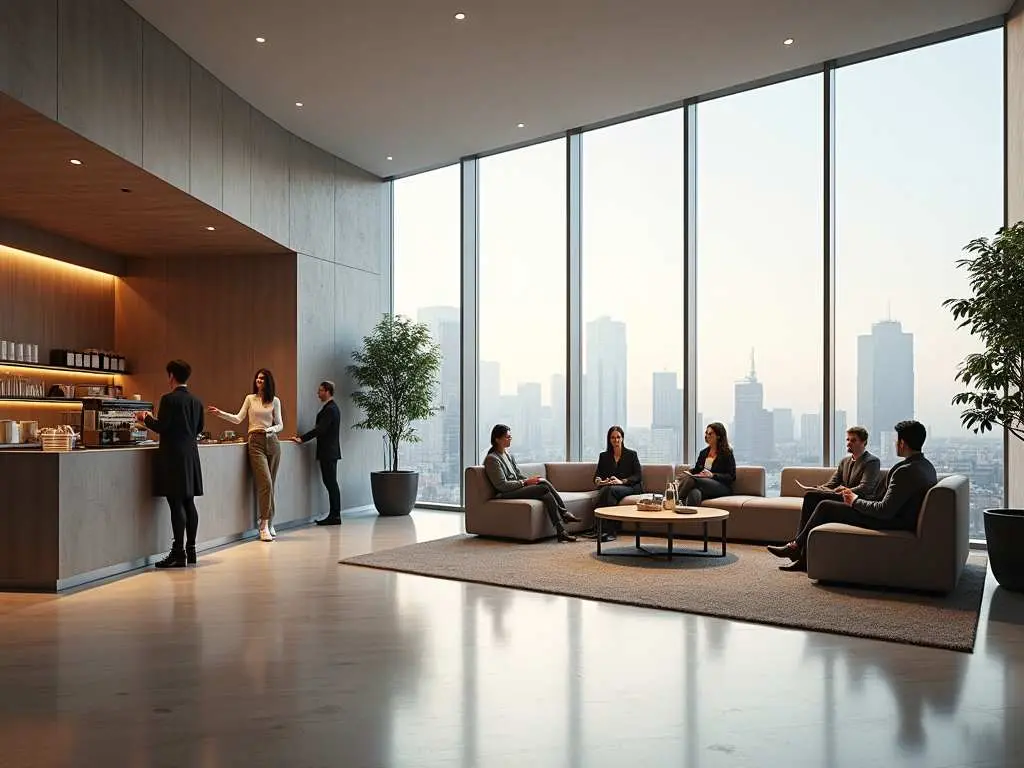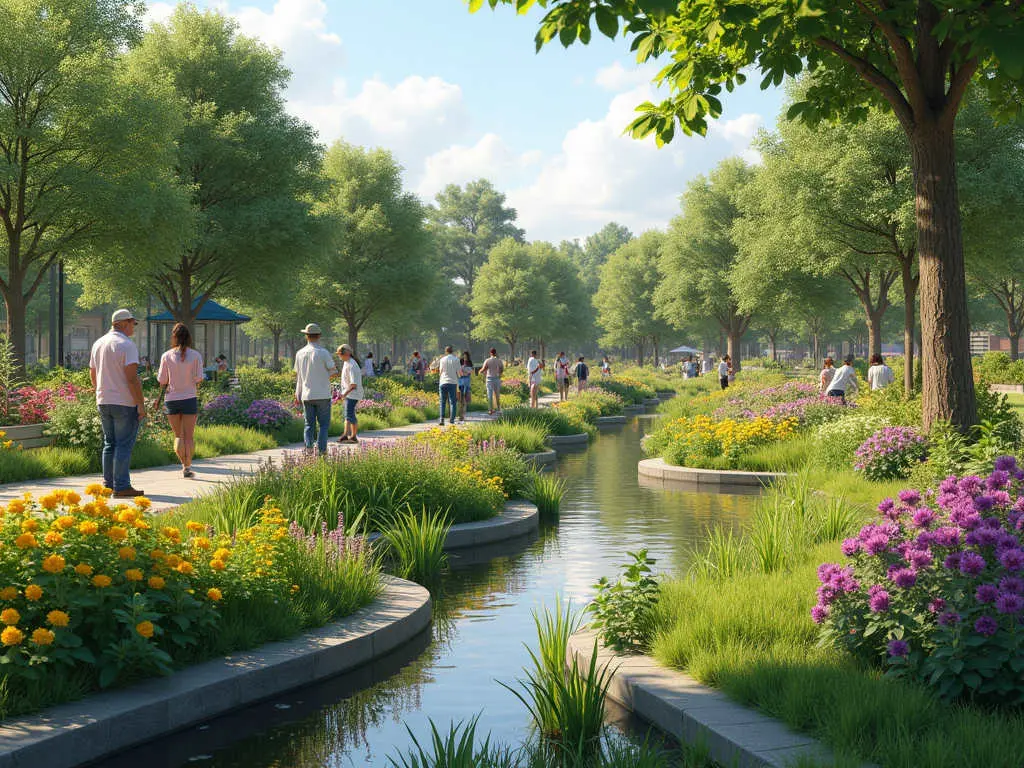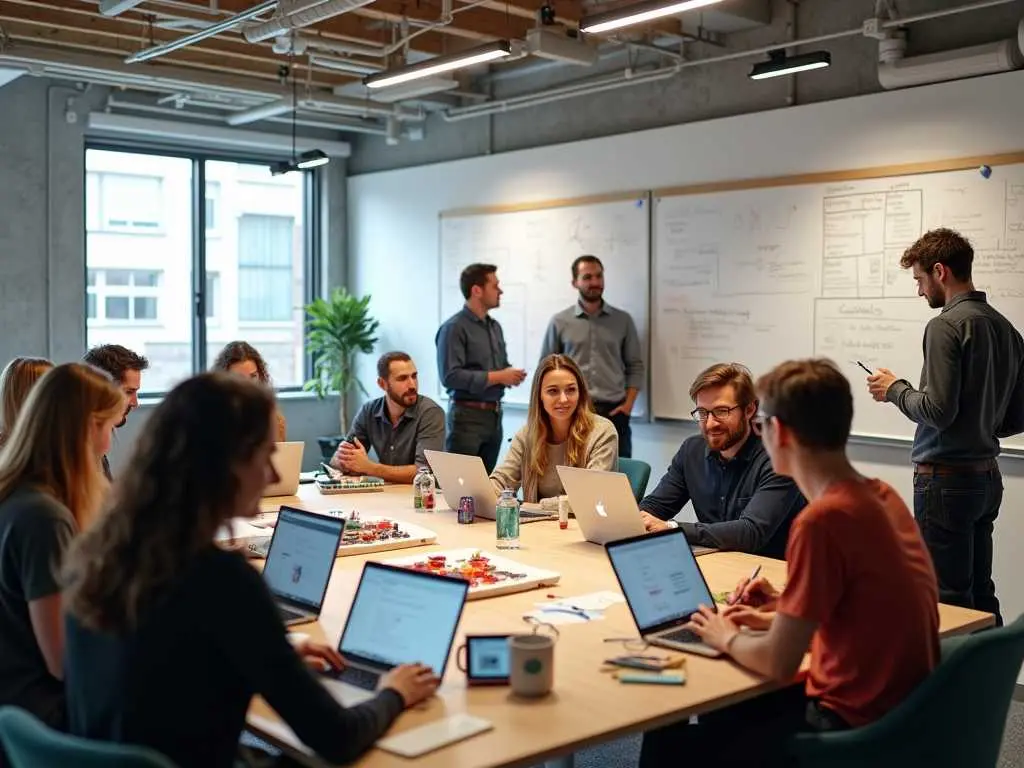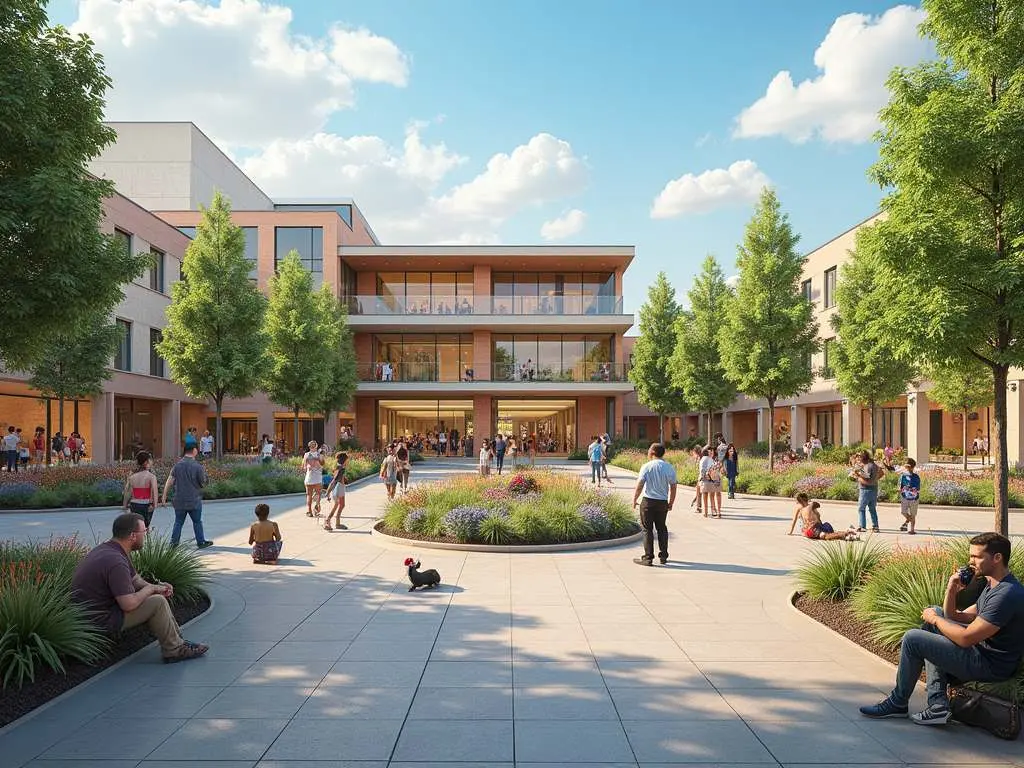With extensive experience in community-centric design, I’ve found that even unplanned spaces can spark meaningful connections. At Curvspace, we celebrate serendipity by designing areas that naturally become gathering points. This article uncovers how overlooked spots transform into thriving community hubs.
Jump to:
The Essence of Serendipitous Spaces
Serendipitous spaces are those unexpected areas within a community that, through thoughtful design or accidental circumstances, evolve into hubs of social interaction and connection. These spaces foster chance encounters, sparking innovation, creativity, and a strong sense of community. The beauty of serendipitous spaces lies in their ability to emerge organically, often in transitional or overlooked areas, transforming them into vibrant gathering places.
Understanding Serendipity in Design
Serendipity, in the context of urban and community design, refers to the occurrence of pleasant surprises or valuable discoveries by chance. Designing for serendipity involves creating environments that encourage unexpected interactions and foster a sense of discovery. This approach recognizes that not all meaningful connections are planned; some of the most impactful moments arise from spontaneous encounters.
- Creating Opportunities: Spaces designed to promote serendipity often include features that encourage people to linger, explore, and interact with one another.
- Embracing the Unexpected: These designs embrace the unpredictable nature of human interaction, allowing for spontaneous events and activities to unfold.
- Fostering Innovation: By bringing diverse individuals together, serendipitous spaces can spark new ideas and collaborations, driving innovation and creativity.
The Role of Transitional Areas
Transitional areas, such as hallways, lobbies, and courtyards, play a crucial role in fostering serendipitous encounters. These spaces, often viewed as mere passageways, can be transformed into vibrant communal zones through thoughtful design. By incorporating comfortable seating, engaging artwork, and inviting landscaping, these areas become natural gathering points where people can connect and interact.

- Lobbies and Entryways: Transforming lobbies into welcoming spaces with comfortable seating and aesthetically pleasing décor can encourage residents or employees to linger and interact.
- Hallways: Hallways can be more than just corridors; they can become galleries showcasing local art or community projects, sparking conversation and engagement.
- Courtyards: Courtyards provide a natural outdoor setting for social interaction, offering a space for relaxation, recreation, and community events.
Key Elements of Community Design for Serendipity
Creating serendipitous spaces requires a holistic approach to community design, focusing on elements that encourage interaction, foster inclusivity, and promote a sense of belonging. By integrating these elements, designers can transform ordinary spaces into extraordinary hubs of community life.
Inclusivity and Accessibility
Inclusivity and accessibility are paramount in creating spaces that welcome and engage all members of the community. Universal design principles should be incorporated to ensure that these spaces are usable by people of all ages, abilities, and backgrounds.
- Ramps and Smooth Pathways: Providing ramps and smooth pathways ensures that individuals with mobility challenges can easily navigate the space.
- Accessible Seating: Including a variety of seating options, such as benches with back support and armrests, accommodates individuals with different needs.
- Sensory Considerations: Designing with sensory considerations in mind, such as minimizing noise and providing tactile elements, creates a welcoming environment for individuals with sensory sensitivities.
Flexibility and Adaptability
Flexibility and adaptability are essential for creating spaces that can accommodate a wide range of activities and events. Multi-functional areas allow for diverse uses, ensuring that the space remains relevant and engaging over time.
- Movable Furniture: Using movable furniture allows the space to be easily reconfigured for different events, from community meetings to fitness classes.
- Adaptable Spaces: Designing spaces that can be easily transformed, such as open lawns that double as event venues, maximizes utility and engagement.
- Technology Integration: Incorporating technology, such as Wi-Fi hotspots and digital kiosks, enhances user experiences and provides access to information and resources.
Nature and Green Spaces

Integrating nature and green spaces into community design enhances the aesthetic appeal of the area and promotes mental and physical well-being. Green spaces provide a serene environment for relaxation, recreation, and social interaction.
- Community Gardens: Community gardens offer residents the opportunity to connect with nature, grow their own food, and build relationships with their neighbors.
- Parks and Green Areas: Well-maintained parks and green areas provide spaces for outdoor activities, such as walking, jogging, and picnicking, promoting a healthy lifestyle.
- Native Landscaping: Using native plants in landscaping reduces environmental impact and creates habitats for local wildlife, enhancing the ecological value of the space.
Examples of Serendipitous Spaces in Action
Serendipitous spaces can take many forms, from community centers and libraries to parks and public squares. These examples illustrate how thoughtful design and community engagement can transform ordinary areas into thriving hubs of social interaction and connection.
Community Centers
Community centers serve as vital hubs for connection, offering diverse programming that caters to all ages and interests. These spaces are designed to be inclusive, serving as a “place for everyone” where people can come together, engage in activities, and build relationships.
- Flexible Spaces: Community centers often include multipurpose rooms, meeting rooms, and recreational spaces that can be adapted to various activities.
- Welcoming Atmosphere: Creating a welcoming atmosphere through thoughtful interior and exterior design makes the space feel warm and inviting.
- Community Input: Involving the community in the design process ensures that the center meets the needs and reflects the values of the local residents.
Libraries
Libraries are traditionally seen as repositories of knowledge, but they also serve as vital community hubs. Modern libraries are designed to be welcoming places of learning, technology, and community engagement.
- Flexible Layouts: Libraries often feature flexible layouts that can be easily reconfigured for different activities, such as reading groups, workshops, and community meetings.
- Technology Access: Providing access to computers, internet, and other technology resources helps bridge the digital divide and promotes lifelong learning.
- Community Programs: Libraries offer a wide range of community programs, from children’s story times to adult education classes, fostering a sense of community and connection.
Parks and Public Squares
Parks and public squares provide vital “third places”–neither home nor work–where social interaction and community building naturally occur. These spaces become the backdrop for shared experiences, reflecting the stories, culture, and history of a city.
- Inviting Design: Thoughtful design, including comfortable seating, shade structures, and engaging landscaping, makes parks and public squares more inviting and usable.
- Community Events: Hosting community events, such as concerts, festivals, and farmers’ markets, brings people together and animates the space.
- Partnerships: Partnerships with local organizations and community groups can help activate the space and ensure that it meets the needs of the community.
Strategies for Designing Serendipitous Spaces
Designing for serendipity requires a shift in mindset, from creating purely functional spaces to designing environments that foster human connection and unexpected encounters. By incorporating the following strategies, designers can create spaces that spark creativity, innovation, and a strong sense of community.
Embrace Open-Ended Thresholds
Open-ended thresholds, or transitional spaces, are key to creating serendipitous encounters. These are the areas where people naturally pass through, providing opportunities for chance meetings and spontaneous interactions.
- Encourage Circulation: Design these spaces to encourage circulation and movement, making it easy for people to cross paths.
- Create Visual Connections: Use transparent materials and open layouts to create visual connections between different areas, allowing people to see and be seen.
- Provide Gathering Points: Incorporate seating areas, coffee stations, or informal meeting spaces to encourage people to linger and interact.
Foster Collaboration and Co-creation

Serendipitous spaces thrive on collaboration and co-creation. Creating opportunities for people to work together, share ideas, and build relationships is essential for fostering a vibrant community.
- Co-working Spaces: Designate areas for co-working, providing flexible workspaces where people can collaborate on projects, share resources, and network with like-minded individuals.
- Community Workshops: Host community workshops and events that bring people together to learn new skills, share knowledge, and create together.
- Online Platforms: Utilize online platforms to facilitate communication, collaboration, and resource sharing among community members.
Encourage Play and Exploration
Play and exploration are essential for fostering creativity and innovation. Designing spaces that encourage people to experiment, discover new things, and have fun can spark unexpected connections and lead to serendipitous discoveries.
- Interactive Installations: Incorporate interactive installations, such as public art displays or digital gaming areas, to engage visitors and encourage playful interaction.
- Outdoor Games: Provide outdoor games, such as chess, ping pong, or giant Jenga, to encourage people to socialize and have fun in the fresh air.
- Discovery Zones: Create discovery zones with hidden pathways, interactive exhibits, or sensory gardens to stimulate curiosity and exploration.
People Also Ask
How can public spaces encourage community interaction?
Public spaces can encourage community interaction by incorporating comfortable seating, green spaces, and multi-functional areas that accommodate various activities and events.
What role does design play in fostering community connections?
Design plays a crucial role in fostering community connections by creating inclusive, accessible, and adaptable spaces that promote social interaction and a sense of belonging.
Why are serendipitous encounters important in community building?
Serendipitous encounters are important in community building because they spark creativity, innovation, and a strong sense of community by bringing diverse individuals together in unexpected ways.
Conclusion
Serendipitous spaces are essential for creating vibrant, connected communities. By embracing open-ended thresholds, fostering collaboration, and encouraging play, we can transform overlooked spots into thriving hubs of social interaction. Let’s design spaces that spark unexpected connections and build stronger communities.
Discover the potential of Curvspace to transform your community spaces. Contact us today to learn more!
References
- Designing for Serendipity, a Means or an End? – PhilArchive – https://philarchive.org/archive/ANNDFS
- Insightful Environment – Sweet serendipity; innovation and office design, https://www.ie-uk.com/blog/serendipity-innovation-office-design
- Illustrarch – Top Tips for Designing Successful Public Spaces That Foster Community Connection – https://illustrarch.com/landscape-architecture/public-spaces/35294-tips-for-designing-successful-public-spaces.html#google_vignette
- IMPRI Impact and Policy Research Institute – https://www.impriindia.com/insights/serendipity-mindset-urban/
Disclosure
Our content is reader-supported. This means if you click on some of our links, then we may earn a commission. Commissions do not affect our editor’s opinions or evaluations. Learn more about our editorial process.

About the Editorial Staff
The Curvspace editorial team comprises a diverse group of experts on intermediate and threshold spaces in homes and workplaces. Architects and interior designers, civil engineers and artists, environmental and behavioral psychologists, sociologists and anthropologists. All collaborate to create helpful content, that explores the full potential of these often-overlooked areas to enhance our daily lives.


